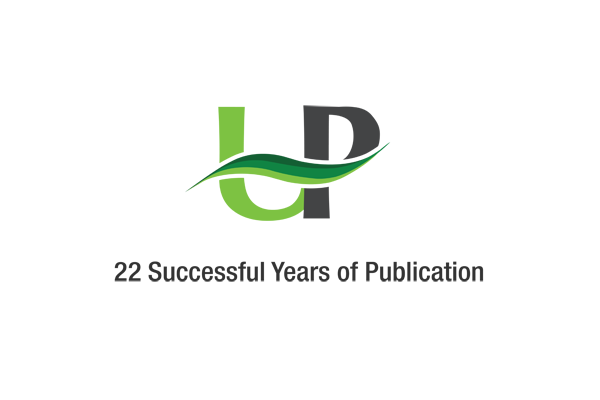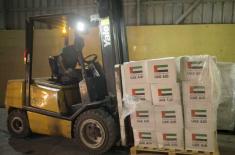
Beyond Waters: Unpacking Livestock Crisis In Food-hit Malakand Division
Umer Jamshaid Published August 24, 2025 | 01:40 PM

MINGORA, (UrduPoint / Pakistan Point News - 24th Aug, 2025) As the flood waters surged through the picturesque valleys of Swat and Buner, they left behind a trail of destruction, crumbling homes, submerged roads and shattered humans lives.
But among the most overlooked victims of this wide spread devastation is livestock that sustains thousands of rural families in Malakand division.
When warning sirens wailed through flood hit Manglawar Swat in the early hours of August 15, 55-year-old shepherd Rehat Shah sprang from his bed. He knew the sound too well as it echoed memories of the 2022 floods. But this time, nature’s fury struck harder and deeper.
“I rushed to my cattle farm and reached in 30 minutes in bicycle normally take two hours on feet. The water was already 10 feet high,” he recalled, his voice trembling. “Forty-five goats and sheep were all gone. Swept away like leaves in a storm.”
With the help of his sons, Shah managed to recover 20 animals. But 12 of them succumbed to illness days later, leaving behind not only an empty shed but a deep emotional and financial void. His loss? Over one million rupees.
“I had been saving for months to perform Umrah this October,” he said, staring at the remains of his destroyed cattle shed. “Now all I have is mud, loss, and broken dreams.”
The floods have impacted more than just individuals rather they have struck at the very heart of rural life in northern Khyber Pakhtunkhwa, where livestock is more than an asset but is the foundation of survival.
In nearby Barikot, livestock trader Shahid Yousafzai lost five prized Azakheli buffaloes, a rare breed known for its resilience and milk productivity. For his family, the milk income paid school fees, covered utality bills, and even funded medical emergencies.
“Now, there is nothing,” said Yousafzai, glancing at the vacant enclosure where his animals once stood. “We are left to beg or borrow. I don’t know how I’ll get through next month.”
With livestock herds decimated across Swat and Buner, milk and dairy product prices have surged. In Mingora, residents Bashir Khan and Usman Ali voiced frustration over the inflated rates.
“Milk is now being sold at Rs260 to Rs280 per litre,” said Bashir, “compared to Rs240 before the floods. Yogurt prices have risen too. The district administration has failed to enforce price controls.”
The inflation has compounded the misery of those already grappling with loss of property, mobility, and access to basic needs.
In the aftermath of the natural calamity, both the Federal and provincial governments have mobilized relief and rehabilitation operations.
With at least 427 lives lost and entire villages submerged across Swat, Buner, Shangla, Dir, and Bajaur, officials are calling it one of the worst flood disasters in recent memory.
KP Govt announced a multi-billion rupee relief package, which includes Rs 2 million compensation for families of the deceased, Rs 500,000 for the injured, Rs 1 billion food Stamp Scheme, offering Rs 15,000 to every affected family, Rs 5 billion for immediate relief and Rs 20 billion supplementary grant for reconstruction.
Special provisions have been made to compensate livestock owners, as confirmed by Aftab Ahmed, Director of Livestock KP.
“We have begun a comprehensive survey of livestock losses,” he said. “The district administration is involved to ensure no deserving farmer is left out. Compensation will be distributed fairly.”
The real-time data on casualties, damaged homes, livestock loss, and infrastructure is being compiled using a centralized digital app developed by the Planning and Development Department.
Utility services are also gradually being restored, with 65% of mobile network coverage back online, and teams from PESCO and other provincial agencies working round the clock to bring power and water back to normal.
Experts like Dr. Gulzar Rehman, an environmentalist, warned that such disasters will only become more frequent unless Pakistan urgently invests in climate-resilient infrastructure, afforestation, and regulated urban development.
“Many of the areas hit this year were still recovering from the 2022 floods,” he said. “It’s not just about rebuilding. It’s about preparing for a future where such events are the norm.”
In the flood-hit tourist town of Pir Baba Buner, Muhammad Sajid, 46, said he watched in horror as the water stream eminated from Elam mountain range devoured homes in the night. “By morning, everything including livestock and cattles was gone.”
While praising rescue efforts by authorities, Sajid, are pleading for more than just tents and rations besides fooders for alive livestock.
“We need medicines, clean water, and a long-term plan for livestock,” he said. “This may happen again next year. What then?”
As the water recedes and the extent of damage becomes clearer, the real test for the government and aid agencies will be to restore livelihoods, not just rebuild infrastructure. Livestock, the quiet backbone of rural life, must not be forgotten in the rush for recovery.
Rehat Shah, looking over the empty patch of land that once held his animals, had just one question. "Will anyone help us start over?” Only time and political will—will answer that.
Recent Stories

UAE leaders congratulate President of Ukraine on Independence Day

UAE leaders congratulate President of Ukraine on Independence Day

Currency Rate In Pakistan - Dollar, Euro, Pound, Riyal Rates On 24 August 2025

Today Gold Rate in Pakistan 24 August 2025

Premier League: Arsenal 5-0 Leeds

UAE President to begin state visit to Angola on Sunday

Emirati humanitarian aid convoy arrives in Gaza as part of Operation Chivalrous ..

Foreign workers boosting Eurozone economy: ECB's Lagarde

Premier League: City 0-2 Tottenham

MoITT, LUMS join hands for secur,citizen-centric digital Pakistan

IGP releases Rs 2.26m for employees treatment

60 police officials promoted to inspector rank
More Stories From Pakistan
-
Beyond waters: Unpacking livestock crisis in food-hit Malakand division
10 minutes ago -
Pakistani mountaineers conquer Tirich Mir
20 minutes ago -
Green Pakistan turns to trees as natural defense against floods
20 minutes ago -
Balochistan Health Minister launches complaint cell to strengthen healthcare governance
20 minutes ago -
Junaid Anwar Chaudhry vows preventive measures to protect Karachi ports, marine life
20 minutes ago -
TEVTA's historic budget sparks global hospitality careers, empowering rural women; says Chairperson
40 minutes ago
-
Qaiser Sheikh urges 'dialogue' only way forward, calls on PTI to adopt allied parties' unified visio ..
40 minutes ago -
DPM/FM Dar, Bangladeshi Foreign Adviser review entire gamut of bilateral ties
50 minutes ago -
International conference on Kashmir in Brussels: Governor KP calls for UN-backed resolutions
1 hour ago -
8 killed, 47 injured as storm wreaks havoc in Dera Ismail Khan
1 hour ago -
State Minister Kayani mourns passing of senior journalist’s father-in-law
1 hour ago -
Empowering women through E-Commerce: a new era of financial independence
2 hours ago